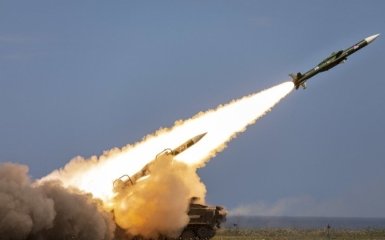After massive attacks on Ukraine, Russia still has about 900 high-precision missiles in its arsenal.
The Air Force announced how many missiles the Russian Federation has
According to Air Force spokesman Yuriy Ignat, according to the latest data, the Russian Federation has about 900 high-precision long-range missiles left.
As Ignat points out, during these attacks, the Russians used almost all the missiles they managed to produce after the previous massive attacks.
Therefore, despite what they produce, they also spend. That is why the figure has remained at this level now, - the spokesman of the Air Force emphasized.
At the same time, according to Yuriy Ignat, the Russian army also has a large number of missiles of the S-300 anti-aircraft missile complex, with which they, in particular, fire at Kharkiv region, as well as aviation and anti-ship missiles.
On December 15, Ignat also reported that at that time Russia had about 900 high-precision long-range missiles left.
Why are the missiles of the Russian army increasingly ineffective
According to Valery Romanenko, an expert in the field of aviation, a leading researcher of the National Aviation University, in a comment to the journalists of the publication "RBK-Ukraine", the missiles released by the criminal army of the Russian Federation in Ukraine do not always achieve their goals.
This, among other things, is facilitated by Ukraine's strengthening of EW systems.
Romanenko noted that currently Ukraine has received a large number of modern EW systems from Western partners.
That is, not rockets, not artillery systems there, but "others". These are the means of radio-electronic warfare, the expert explains.
Romanenko also emphasized that Ukraine's western partners are currently effectively closing Russia's way to obtain the components necessary for the production of EW.
Already, more countries have begun to actually monitor supply chains of components to Russia. This applies to the USA, and a number of European countries, etc.
He pointed out that, on the one hand, the Russians are trying to improve missiles, and on the other hand, this indicates problems with supplies and production technology.
Now we produce a significant number of systems, but most of them are anti-drone. In general, this is a separate topic and no one will make public what frequencies they work on, - emphasizes the analyst.
According to him, the task is to overlap the navigation systems of cruise missiles and drones.
But Russian cruise missiles and drones have, say, such a unit as "Comet" and "Comet-M", which generally receives information from 4 satellite systems operating at different frequencies.
And here is the task, if we want to knock down the guidance, suppress the signal, or distort the signal. And if the signal is distorted, the rocket will still receive it, but it will not fly where it should, the expert explains.



